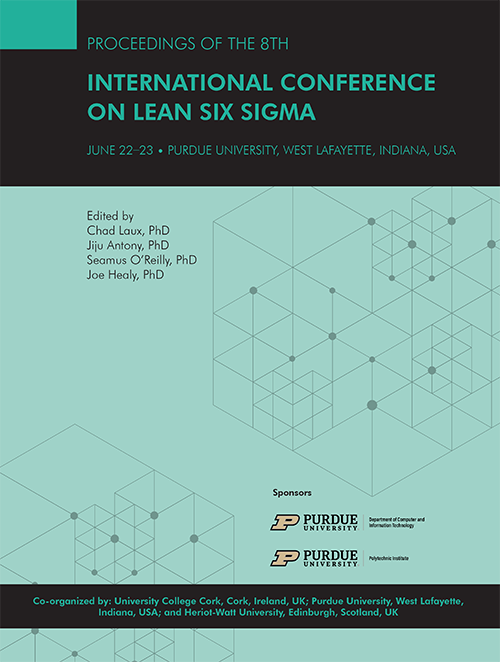Abstract
1. Purpose
This research focused on the adoption of Six Sigma within FDA-regulated pharmaceutical companies to create an effective CAPA system for reducing the cost of noncompliance and supporting organizational performance.
2. Design/Methodology/Approach
This study utilized the DMAIC methodology, in a case study, to improve the CAPA process within a medical device company regulated by the FDA. All the critical requirements for compliance CAPA system was being defined from the FDA sources and the DMAIC model was be applied to improve and maintain CAPA performance.
3. Findings
Using the DMAIC approach supported identifying the bottlenecks and process variation. within CAPA. A stepwise-based CAPA model was modified for companies to adopt for their own continuous improvement journey.
4. Research Limitations/Implications
This research is limited to the aspects of CAPA regulation as one important regulatory requirement, within the FDA regulatory environment. Further research is needed to extend the knowledge and application of Six Sigma within the regulatory sector to achieve near perfection compliance performance required.
5. Practical Implications
This research serves as an approach for the practitioner to utilize in similar, highly regulated environments, within the life sciences sector.
6. Social Implications
7. Value
This paper expands knowledge of quality system regulation through this novel interactive application of Six Sigma in improving CAPA. This allows companies to gain a greater understanding of conducting effective systems and bring the best results needed for forwarding tractions.
DOI
10.5703/1288284317337
Recommended Citation
Nour, Reham and Laux, Chad, "APPLICATION OF LEAN SIX SIGMA TO REDUCE THE COST OF REGULATORY NONCOMPLIANCE." (2021). International Conference on Lean Six Sigma. 2.
https://docs.lib.purdue.edu/iclss/2021/hl/2
APPLICATION OF LEAN SIX SIGMA TO REDUCE THE COST OF REGULATORY NONCOMPLIANCE.
1. Purpose
This research focused on the adoption of Six Sigma within FDA-regulated pharmaceutical companies to create an effective CAPA system for reducing the cost of noncompliance and supporting organizational performance.
2. Design/Methodology/Approach
This study utilized the DMAIC methodology, in a case study, to improve the CAPA process within a medical device company regulated by the FDA. All the critical requirements for compliance CAPA system was being defined from the FDA sources and the DMAIC model was be applied to improve and maintain CAPA performance.
3. Findings
Using the DMAIC approach supported identifying the bottlenecks and process variation. within CAPA. A stepwise-based CAPA model was modified for companies to adopt for their own continuous improvement journey.
4. Research Limitations/Implications
This research is limited to the aspects of CAPA regulation as one important regulatory requirement, within the FDA regulatory environment. Further research is needed to extend the knowledge and application of Six Sigma within the regulatory sector to achieve near perfection compliance performance required.
5. Practical Implications
This research serves as an approach for the practitioner to utilize in similar, highly regulated environments, within the life sciences sector.
6. Social Implications
7. Value
This paper expands knowledge of quality system regulation through this novel interactive application of Six Sigma in improving CAPA. This allows companies to gain a greater understanding of conducting effective systems and bring the best results needed for forwarding tractions.






